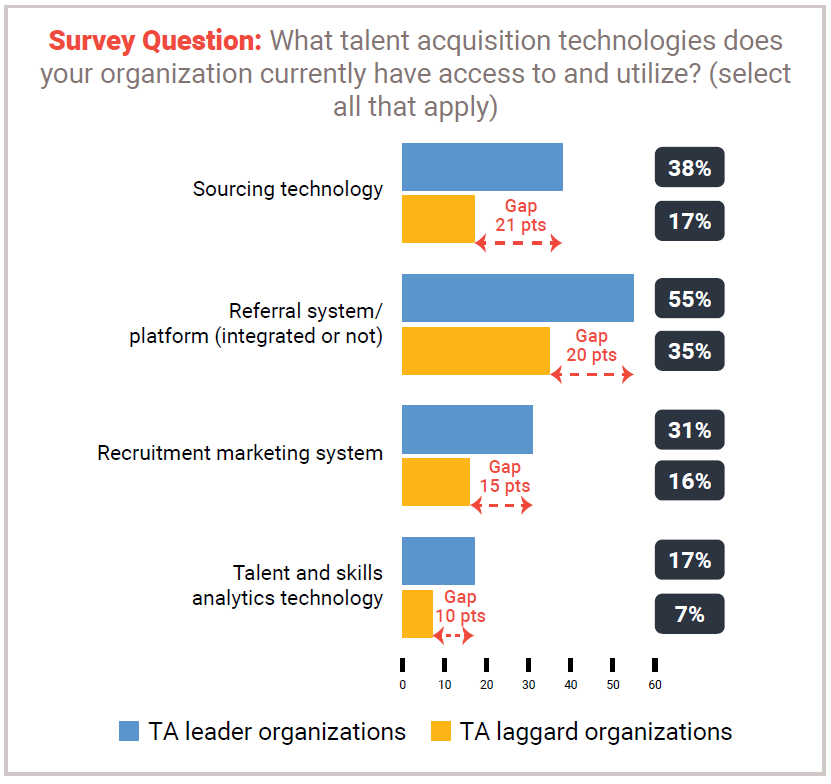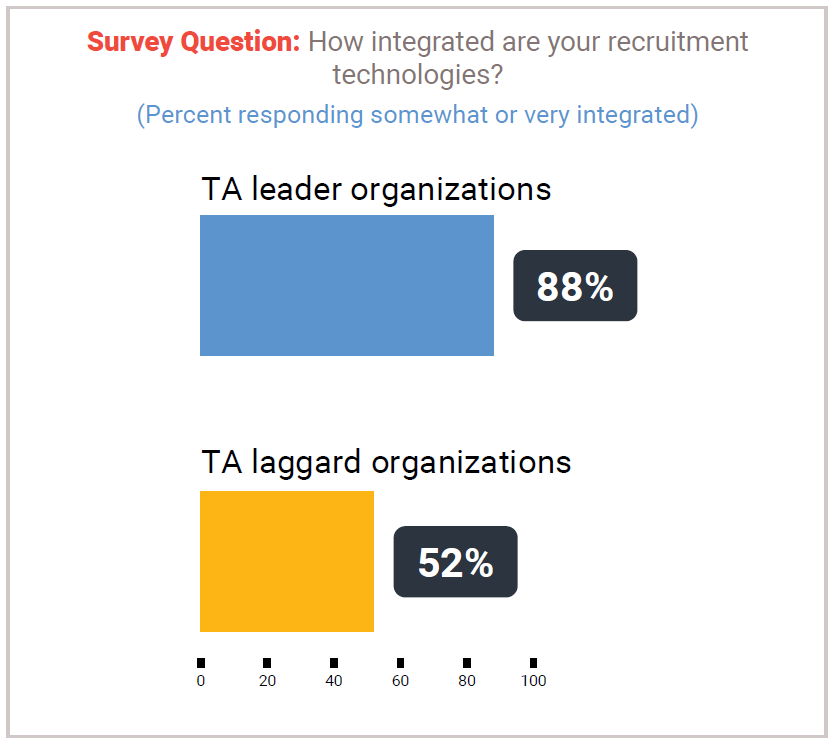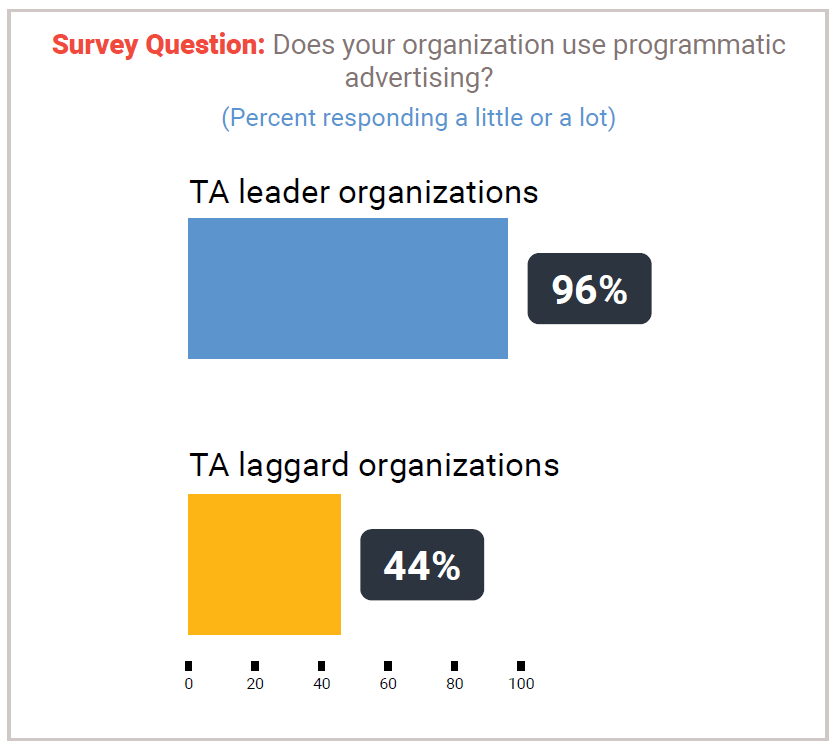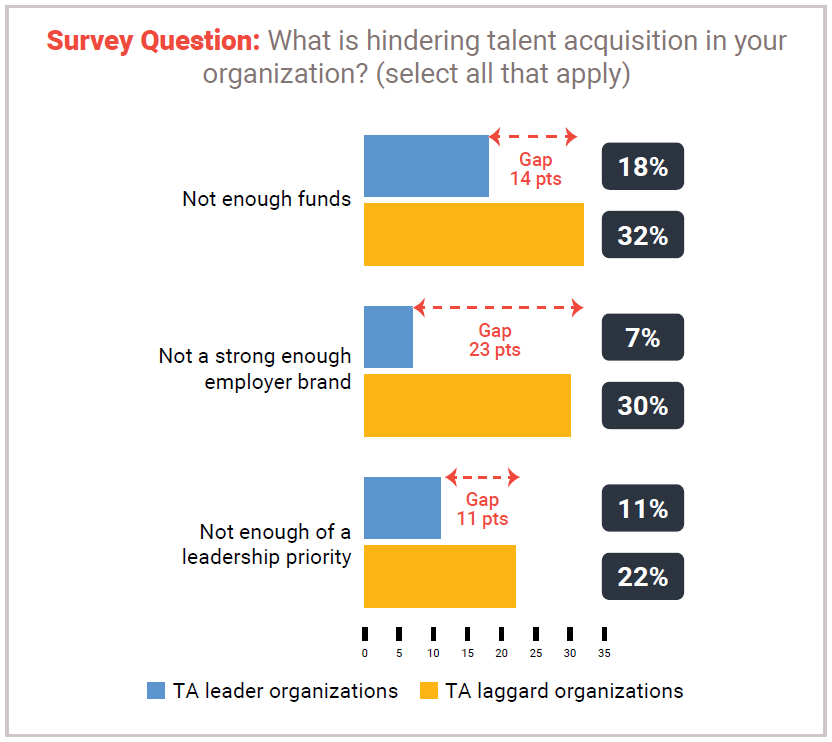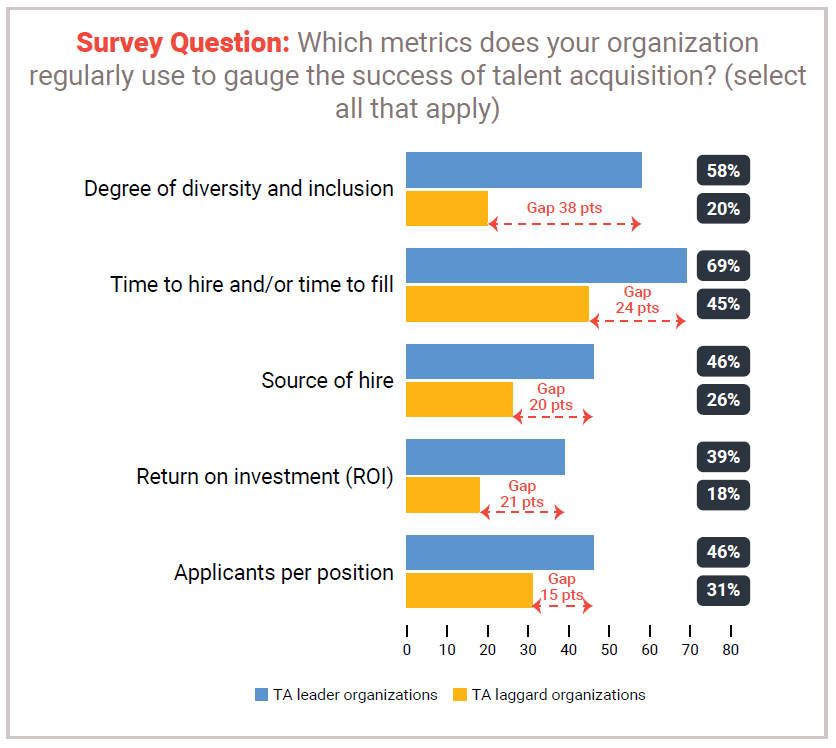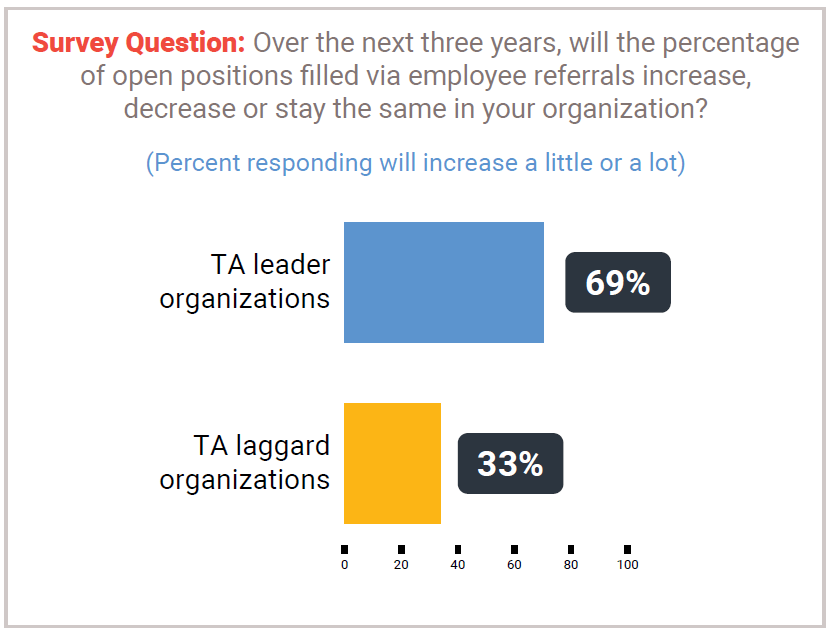In this section of the report, we provide side-by-side comparisons between leaders in TA and laggard TA firms. We divided the respondents into two cohorts:
- TA leader organizations: Those who answered the question “Which of these designations best describes the talent acquisition (TA) process in your organization?” as “Advanced results-oriented” or “Top-notch strategic.”
- TA laggard organizations: Those who answered the question “Which of these designations best describes the talent acquisition (TA) process in your organization?” as “Nonexistent,” “Chaotic,” “Improvisational” or “Progressing.”
Of course, correlation is not the same as causation. We cannot say with certainty that any particular practice will result in better performance. The data do, however, reveal interesting patterns about possible best practices.

TA leader organizations place far more emphasis on the importance of hiring great talent
As previously noted, TA leader organizations rate the overall talent of their organizations much more highly than do TA laggard organizations. One reason for this is that they prioritize recruiting more than laggard organizations do. Seventy-six percent of TA leader organizations say that hiring talent is either among their top three issues or their very top issue. This compares to only 49% for TA laggards.
TA leader organizations are much more likely to use a greater variety of technology tools
We asked participants to indicate which recruiting technologies their organization has access to and utilizes. More than two-fifths of TA leader organizations indicate they use five out of the twelve technologies. Leaders appear to be more comfortable with talent acquisition technologies than their TA laggard peers. Some of the largest differences between TA leader and laggard organizations are in the areas of:
- sourcing technology
- talent analytics
- recruitment marketing systems
- referral systems
TA leader organizations are more likely to have some type of integration within their tech stack
When it comes to developing a recruitment technology stack, just 52% percent of TA laggards say their technologies are somewhat or very integrated compared to 88% of TA leaders. TA leader organizations know the importance of recruitment technologies being able to ‘talk’ to one another. With more and more applicants applying for jobs post-Covid, HR professionals need their recruitment technologies to sync so the recruitment processes moves along efficiently.
TA leader organizations are more likely to use programmatic advertising
As we explained previously, programmatic advertising uses advanced technologies to target ads to the most likely candidates and charges the organization only when a candidate clicks on the display. Ninety-six percent of TA leader organizations use programmatic advertising either a little or a lot, compared to only 44% of TA laggards.
TA leader organizations are much less likely to encounter organizational hindrances to talent acquisition
In most areas, TA leader organizations are less likely than TA laggard organizations to say they encounter organizational hindrances to talent acquisition. There are three areas where there are noteworthy gaps between the two cohorts:
- a lack of needed funds
- an employer brand that is not strong enough
- a lack of leadership prioritization
These hindrances tend to be linked to corporate culture. For TA laggard organizations to address these hindrances, their leaders must prioritize TA enough to invest in the employer brand in particular and talent acquisition more generally.
TA leader organizations are much more likely to measure talent acquisition outcomes
TA organization leaders are especially more likely than TA laggard organizations to measure talent acquisition outcomes in five areas:
- degree of diversity and inclusion
- time to hire and/or time to fill
- source of hire
- return on investment
- applicant per position
As we noted earlier, diversity and inclusion in the workforce has become a much higher priority for organizations over the last year. It is telling that TA leader organizations are nearly three times more likely to measure it, suggesting this has become an imperative for many high-talent organizations.
TA leader organizations will fill more open positions with internal referrals
As we discussed previously, internal referrals are a low cost and reliable way to find talent for internal openings. Sixty-nine percent of TA leader organizations plan to fill more open positions with internal referrals over the next three years. Yet, only 33% of TA laggard organizations expect to see an increase.

